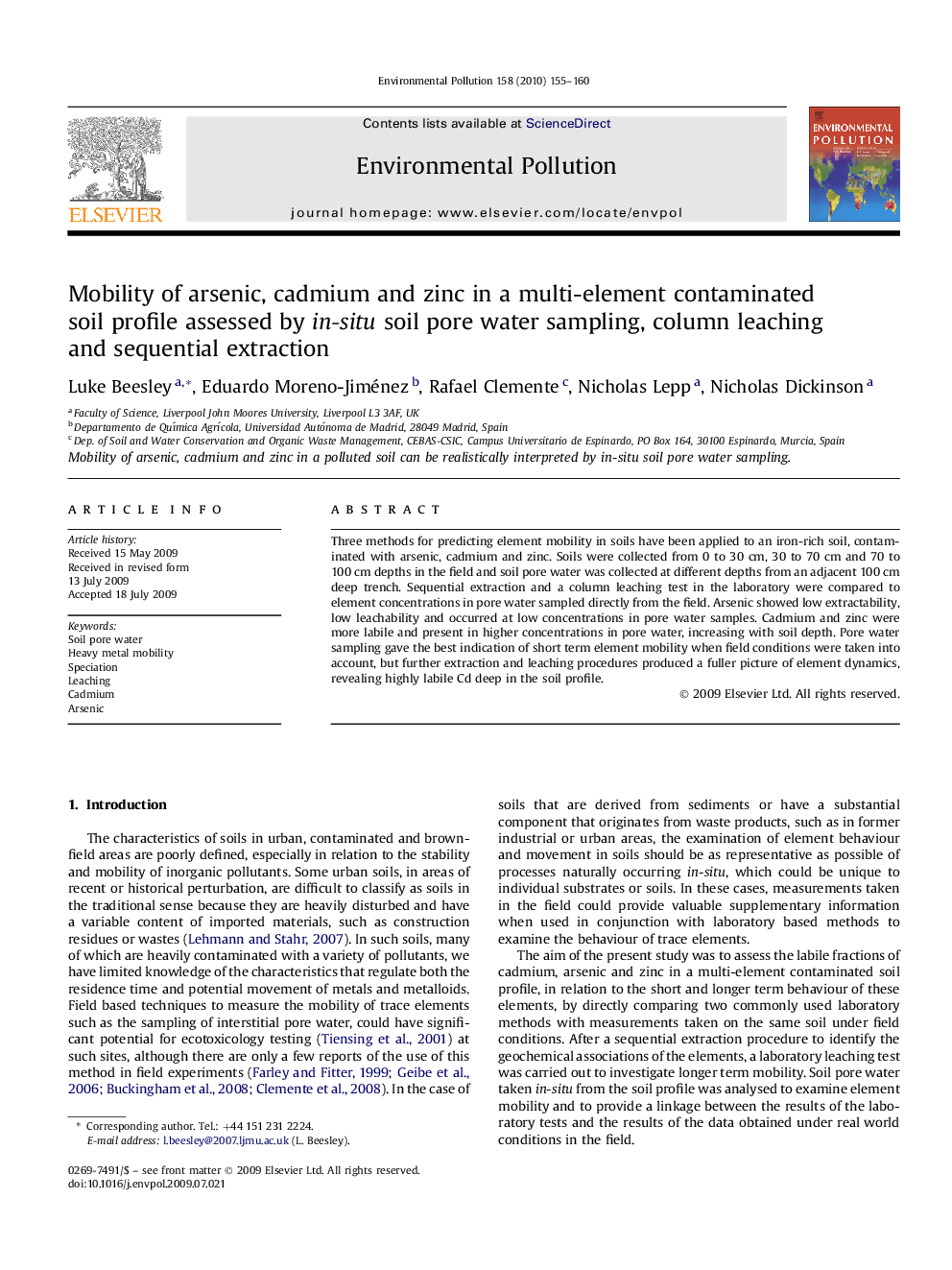| Article ID | Journal | Published Year | Pages | File Type |
|---|---|---|---|---|
| 4425782 | Environmental Pollution | 2010 | 6 Pages |
Three methods for predicting element mobility in soils have been applied to an iron-rich soil, contaminated with arsenic, cadmium and zinc. Soils were collected from 0 to 30 cm, 30 to 70 cm and 70 to 100 cm depths in the field and soil pore water was collected at different depths from an adjacent 100 cm deep trench. Sequential extraction and a column leaching test in the laboratory were compared to element concentrations in pore water sampled directly from the field. Arsenic showed low extractability, low leachability and occurred at low concentrations in pore water samples. Cadmium and zinc were more labile and present in higher concentrations in pore water, increasing with soil depth. Pore water sampling gave the best indication of short term element mobility when field conditions were taken into account, but further extraction and leaching procedures produced a fuller picture of element dynamics, revealing highly labile Cd deep in the soil profile.
